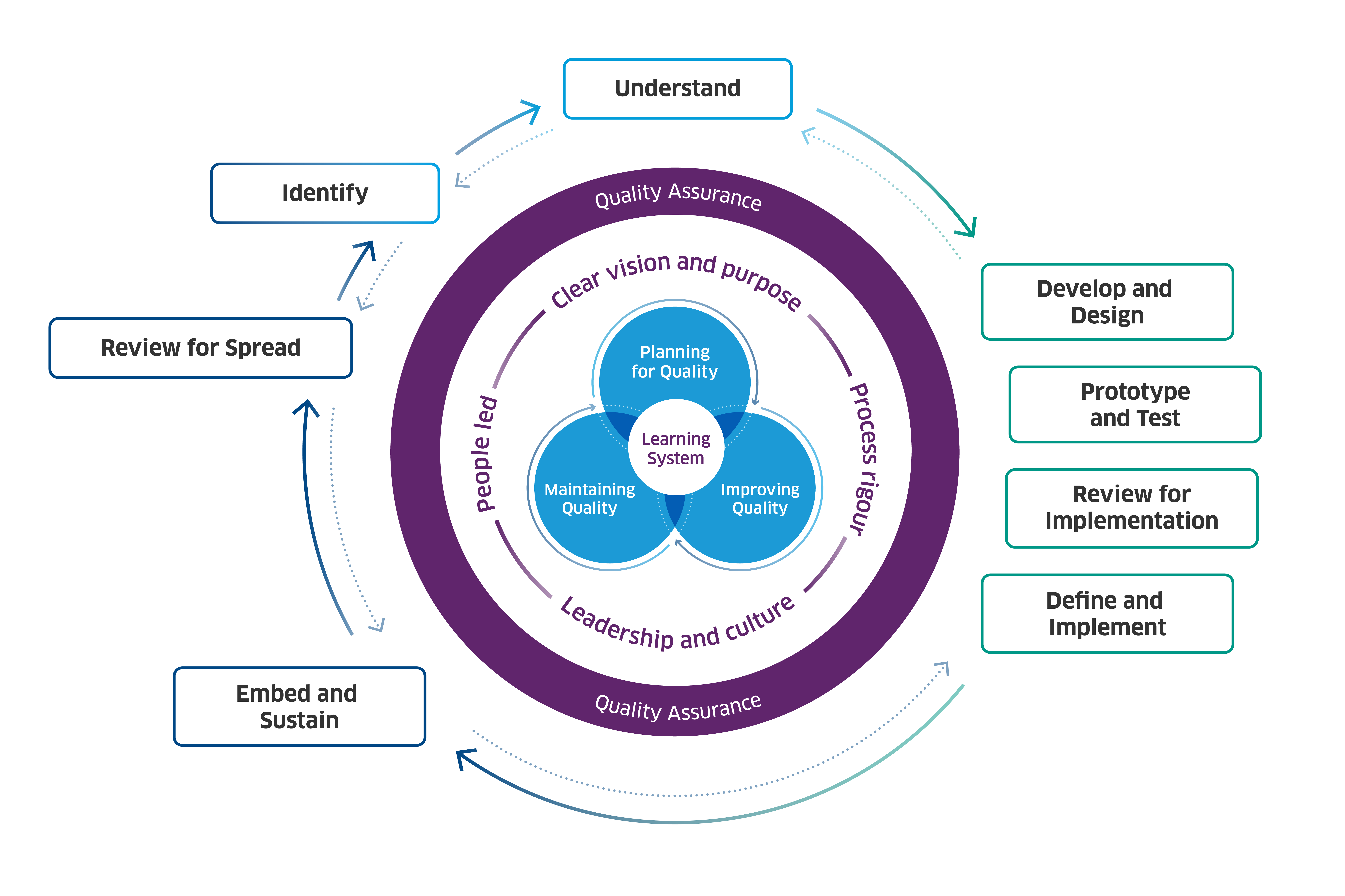The Early Learning and Childcare (ELC) Improvement programme is led by the Care Inspectorate and aims to support funded settings across Scotland to improve the quality of ELC and meet the National Standard, and provide support for those settings not meeting this. The full case study and summary are available below.

Steps of change
Identify
Identified the problem: a significant number of early learning and childcare settings across Scotland were not meeting the National Standard, particularly in disadvantaged areas. There was a need for targeted support to improve quality and outcomes for children.
Understand
An evidence review and needs assessment identified settings most in need of support. Data from inspections and performance indicators highlighted gaps in quality and consistency.
Develop and design
The programme was designed to address the gaps in quality and consistency through targeted and universal support. This included teaching and “reflect and review” sessions, one-to-one support and peer learning opportunities, universal resources accessible via the ELC Improvement Hub, and bespoke face-to-face sessions.
Prototype and test
The programme was piloted with nominated services across Scotland. This included delivery of sessions to over 500 participants and introduced peer support sessions and closed social media groups to sustain learning. New formats for universal resources were tested.
Review for implementation
The programme was reviewed for impact showing an increase in the number of services meeting the National Standard, increased confidence in using quality improvement methodology, and improved leadership, staff engagement, and outcomes for children.
Define and implement
There was an iterative implementation process including continued delivery through three annual cohorts, prioritisation of services, expansion of face-to-face training, and development of a structured nomination and evaluation process.
Embed and sustain
Sustainability was enabled through peer support sessions and revision opportunities for past cohorts, regular update of universal resources, and collaboration with local authorities to ensure alignment with inspection and improvement goals.
Review for spread
Recommendations have been made to extend the programme to all ELC, childminder, and school-aged childcare settings. There is strong stakeholder support national scale-up.
Enablers of quality and change
Clear vision and purpose
A clear vision helped to provide direction, motivation, and alignment, including:
- a shared goal to improve quality and outcomes for all children in ELC settings
- alignment with the National Standard and “Funding Follows the Child” policy
Leadership and culture
Leadership and culture were critical in driving the change forward, including:
- strong collaboration with local authorities and scrutiny teams
- empowering staff and leaders through training, coaching, and peer learning
- creating psychologically safe spaces for reflection and growth
People-led
Ensuring a people led approach to change was essential, including:
- shaping programme content in response to participant feedback and local needs
- ensuring peer support and lived experience was central to delivery
- Ensuring inclusion of childminders and school-aged care in universal resources
Process rigour
Ensuring process rigour was key to ensuring high-quality and reliable outcomes, including:
- using quality improvement methodology throughout
- tracking outcome and process measures
- delivering structured, evidence-based sessions and resources
